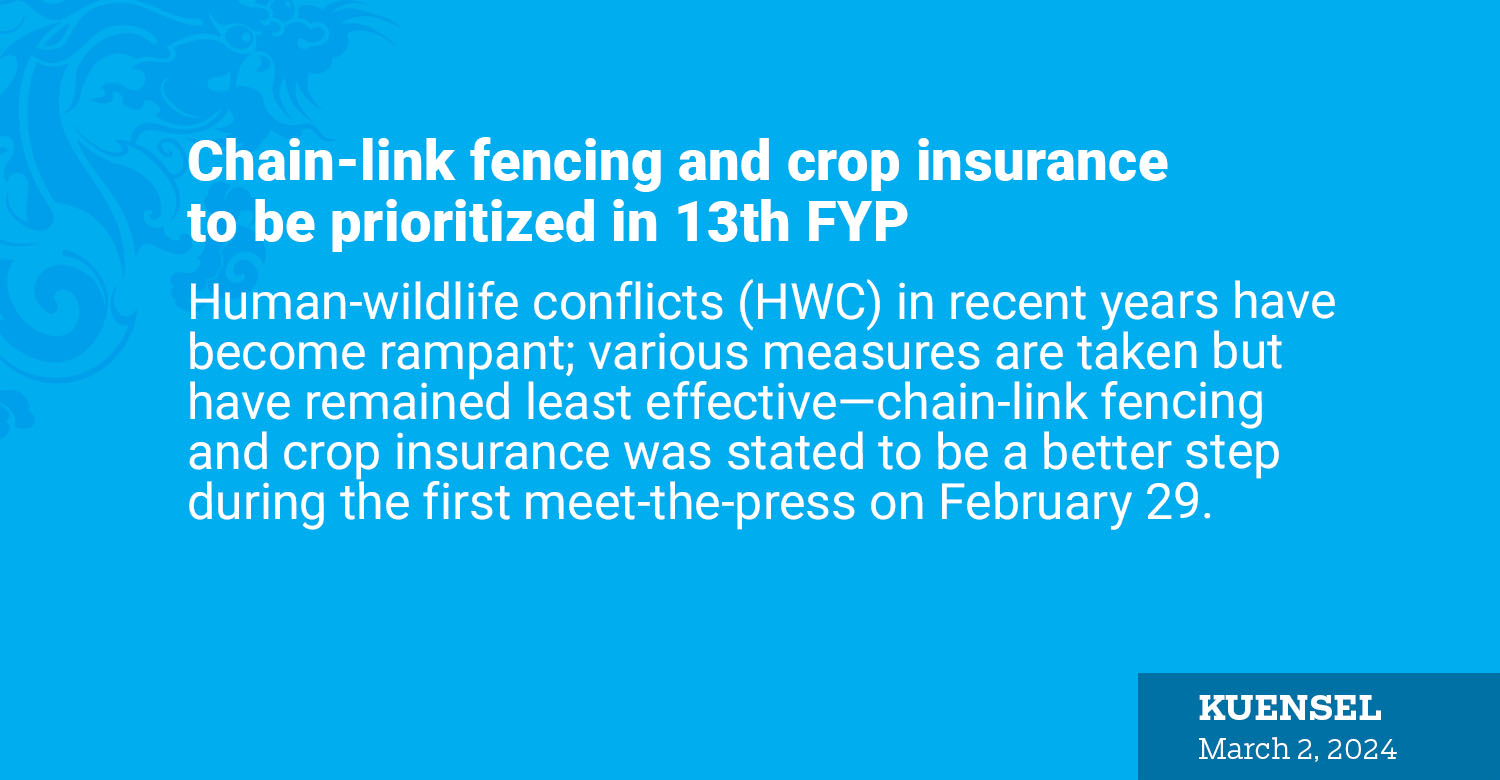YK Poudel
Human-wildlife conflicts (HWC) in recent years have become rampant; various measures are taken but have remained least effective—chain-link fencing and crop insurance was stated to be a better step during the first meet-the-press on February 29.
Nima is 74-year old farmer in Kharphu Kurichilo, Lumang in Trashigang—grows maize, buckwheat, mustard and beans as the main cereals. “Human-wildlife conflict is one of the major challenges in the village. We need chain-link fencing to protect our crops from the wild animals,” she said.
“The farming tools haven’t changed much so far, just a little change is the two mini-power tillers in the village which were supported by Tarayana Foundation, the farmers hire it to prepare the fields,” she said.
The HWC, she said, is common in places where wildlife and human populations coexist and share limited resources—it requires the attention of government officials, policy makers and donors.
One of the local government officials said that Lumang gewog, with 165 households, grows various kinds of cereals and vegetables and has not been able to receive chain-link fencing from the government.
Farmers across the nation suffer economic loss with livestock killed and crops damaged without any compensation. The reason being; reporting late without evidence, lengthy process to justify it, and farmers unaware of the compensation scheme.
Agriculture and Livestock Minister, Younten Phuntsho said that absence of one concrete solution to end the issue is a challenge for now. “Yet, the initiation of electric fencing and chain-link fencing across the nation will be prioritized in the 13th Five Year Plan,” he said.
According to lyonpo, the draft proposal of the plan is currently under review.
Minister of Energy and Natural Resources, Gem Tshering, said that although issues are similar across the country, the measures aren’t. “Measures taken in the south are not appropriate in the west—the crop insurance for the farmers will be strengthened to encourage farmers,” he said. Meanwhile, the ministry is currently studying human-wildlife coordination to make effective policies benefiting the farmers as well as animals.
The major conflicts seen are with wild boars, barking deer, sambar, elephants and bears. For example, crop depredation and property damage by elephants continue to be a serious issue in the southern Bhutan, deer are rampant in the central Bhutan, while the Asiatic black bear and wild boars are seen across the country.
National Impact Assessment Report on Electric Fencing 2021, states that to mitigate human- wildlife conflict and to reduce crop loss to wildlife, the government has approved the use of electric fencing in 2013 and chain-link fencing started last year.
Thus far, 16 out of the 20 dzongkhags have already been covered by the chain-link fencing initiative. The rest are nearing completion—Haa will proceed once site details are submitted.
The former government allocated Nu 500 million for the year 2022-2023 and Nu 1 billion for 2023-2024 to support the chain-linked fencing project.
Moreover, for the financial year 2023 and 2024, the finance ministry has approved a budget of ngultrum 250 million. This allocation will be used for power tiller hiring, mini tiller and the hiring of combined harvester machines.
According to data from the ministry, the country currently possesses 2,305 power tillers, 306 mini tillers, 197 tractors, and 19 combine harvesters, which are distributed between the Food Corporation of Bhutan Limited and certain gewogs.


